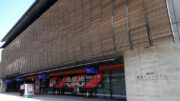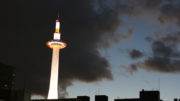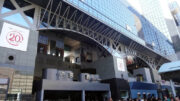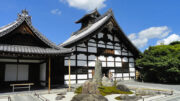 Opened in 1895, the Kyoto National Museum stands as one of Japan’s premier institutions dedicated to pre-modern Japanese and Asian art. Originally established as the Imperial Museum of Kyoto, it was donated to the city in 1924, becoming a public museum with a mission to preserve and showcase historical treasures.
Opened in 1895, the Kyoto National Museum stands as one of Japan’s premier institutions dedicated to pre-modern Japanese and Asian art. Originally established as the Imperial Museum of Kyoto, it was donated to the city in 1924, becoming a public museum with a mission to preserve and showcase historical treasures.
Over the years, the museum has undergone several significant renovations and expansions to accommodate its growing collection. Notable additions include the vast Collection Hall in 1966, the grand South Gate, and the 100th Year Anniversary Hall in 2001. The most recent enhancement, completed in 2013, is the Heisei Chishinkan Wing, a state-of-the-art space designed by renowned architect Taniguchi Yoshio, known for his redesign of the Museum of Modern Art in New York.
The museum’s collection boasts what is believed to be the largest assemblage of Heian period artefacts, alongside rare Japanese and Chinese sutras. The Heisei Chishinkan Wing spans four levels and displays an impressive range of art forms, including paintings, sculptures, calligraphy, lacquerware, metalwork, textiles, and ceramics. The wing also features fascinating archaeological relics, including items unearthed from temple and excavation sites in Nara from the Heian period.
The museum’s historic red brick main building is now primarily used for special exhibitions and features a grand central gallery alongside ten smaller exhibition spaces. Complementing the main building’s charm is the striking brick and stone main gate, dating back to the museum’s inception in 1895.
The expansive grounds are meticulously landscaped, offering a serene environment with fountains, artworks, and pathways. At the east end of the garden, a traditional Japanese tea house adds a touch of elegance and is a popular venue for private events and celebrations.
A visit to the Kyoto National Museum offers an enriching experience, allowing visitors to explore Japan’s artistic and historical legacy in a beautifully maintained setting.
Nearby Attractions
Kyoto Railway Museum: A short walk from the museum, this museum offers a fascinating look into Japan’s rail history with interactive exhibits and vintage trains.
Toji Temple: A UNESCO World Heritage site known for its impressive five-story pagoda and historical significance, located nearby.
Kyoto Tower: Offering panoramic views of Kyoto from its observation deck, it is a prominent landmark close to the museum.
Sanjusangendo Temple: Famous for its 1,001 statues of Kannon, the temple is a short distance away and provides another glimpse into Kyoto’s rich cultural heritage.
Access Information
The Kyoto National Museum is conveniently located in central Kyoto:
By Train: It is a short walk from Tofukuji Station on the Keihan Line or a 20-minute walk from Kyoto Station.
By Bus: Several city buses stop near the museum, including routes 208 and 202.
Opening Hours: The museum is typically open from 9:30 AM to 5:00 PM, with extended hours during special exhibitions.
Admission: Entry fees vary depending on the exhibitions, but are generally affordable. Check the museum’s website for the latest information on exhibitions and ticket prices.
Official website:
http://www.kyohaku.go.jp/eng/index.html




